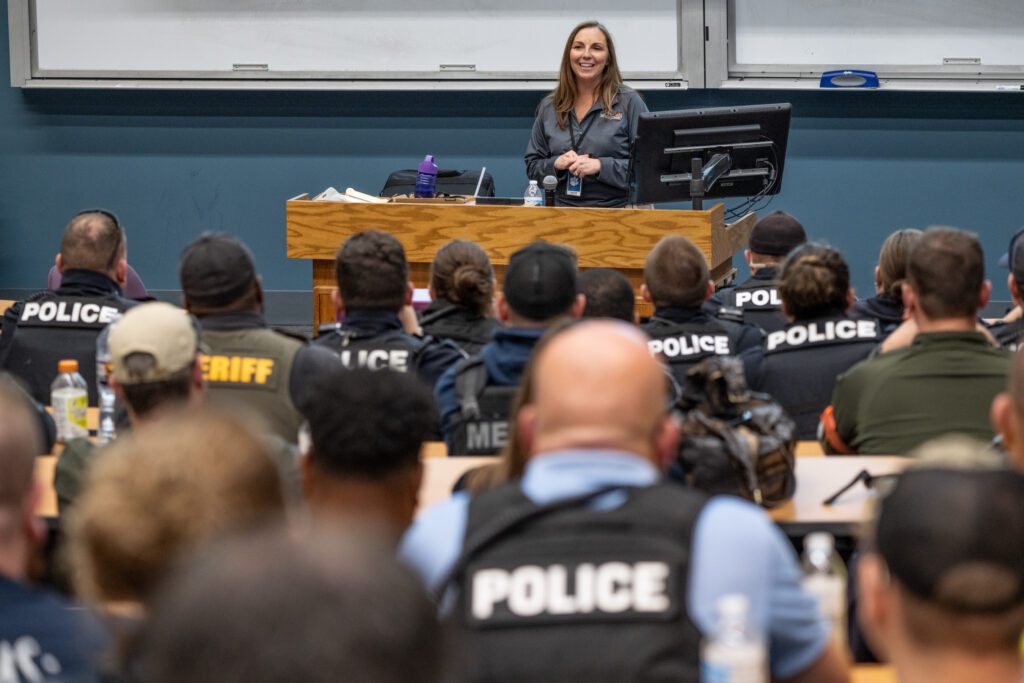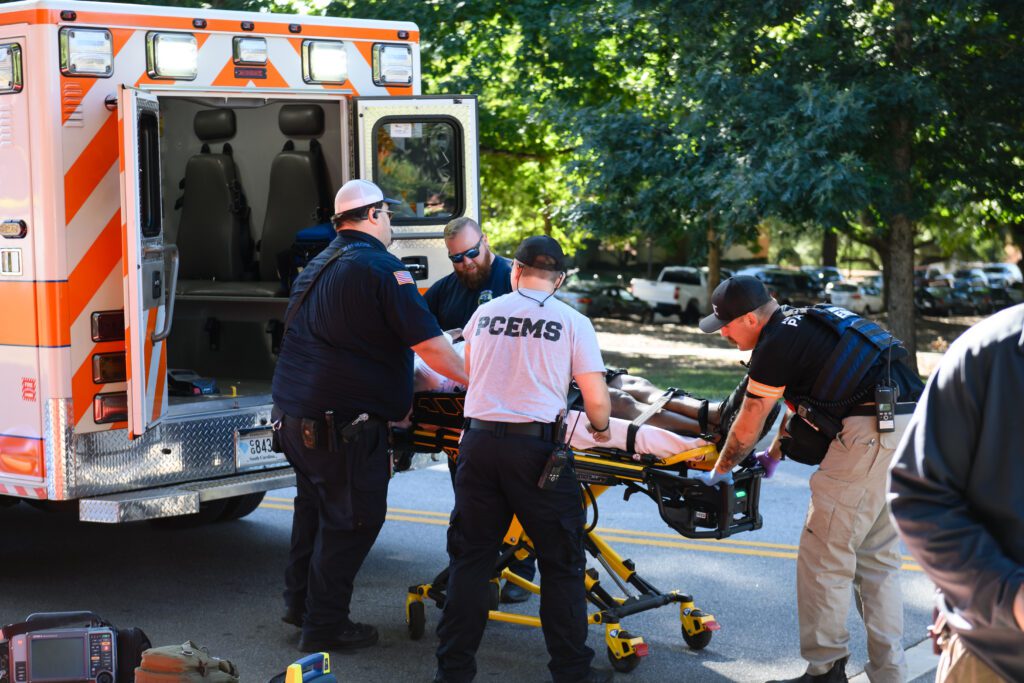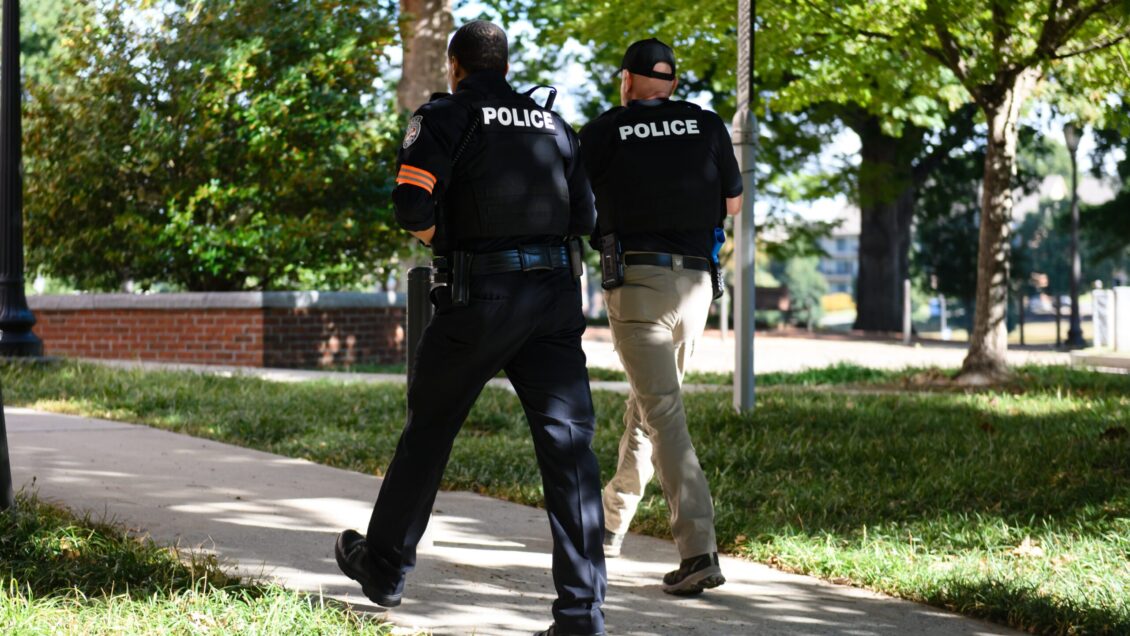Clemson University Public Safety hosted a full-scale active threat training exercise on Monday at Tillman Hall and the surrounding area. The event was strategically held during students’ Fall Break to minimize disruption of campus activities.
“This exercise enabled us to practice our emergency plans associated with an active threat,” said Associate VP of Public Safety and Chief of Police Greg Mullen. “We simulated an active threat on campus and what that response would look like in a coordinated way, integrating all of the public safety entities that we would be working with.”
“Unfortunately, this specific situation is one that we see more and more around the country,” Mullen continued. “There is a lot of trauma when these situations do occur, so we want to make sure that we are doing everything we can to prevent it and be able to respond as quickly as possible to minimize casualties that may occur in a situation like this.”

The event was the culmination of months of planning between Clemson University Emergency Management (CUEM), the Clemson University Police Department (CUPD) and Clemson University Fire & EMS (CUFD) with local participation from an additional seven law enforcement agencies, five EMS agencies and hospitals, two dispatch centers, two emergency management agencies and six campus partners. In all, over 150 participants took part in the exercise.
The exercise lasted two hours and focused on resolving an active threat that involved multiple assailants on Clemson’s main campus. It included everything from initial dispatch communications to internal and external venue operations, rescue task force initiation, building inspection, medical transport, public information and much more. Controllers and evaluators within each area observed and evaluated participants on progress toward predetermined capability targets.
The exercise began around 10 a.m. with simulated calls to dispatch about a suspicious person on campus, before receiving more calls from a specified location. Officers responded accordingly and the first CU Safe Alert went out to those participating in the exercise, simulating the campus alert system.
Officers arriving on-scene formed a rescue task force, working to stop the threat and secure the building, in order to allow medical aid to reach those that needed it within the simulated environment. Additional law enforcement arrived on the scene on a staggered schedule to simulate their expected arrival times in a real emergency.

Fire and EMS personnel responded as well, treating and transporting “victims” with simulated injuries, including a simulated helicopter transport. EMS personnel also operated on a staggered timeline, simulating anticipated transport times to and from local hospitals.
The “All clear” CU Safe Alert was sent at 12:02 p.m., removing the simulated secure-in-place order and concluding the exercise. Following the completion of the exercise, multiple “hotwashes” were held to gain insight into immediate takeaways, on the scene and within the larger groups.
The day concluded with a simulated media briefing, with Mullen providing updates to a group of “reporters” on what took place, allowing Marketing and Communications to evaluate media operations for this type of situation.

